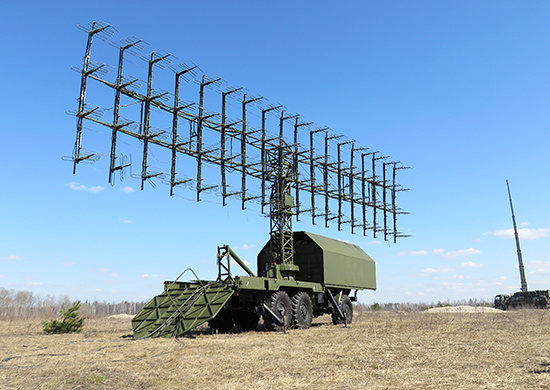
Moscow Deploys Latest Electronic Warfare Systems in Kaliningrad
Publication: Eurasia Daily Monitor Volume: 15 Issue: 174
By:

As Russia’s Armed Forces continue to benefit from the process of military modernization, a growing area of concern for North Atlantic Treaty Organization (NATO) planners is Russia’s continued steps to boost anti-access, area denial (A2/AD) capabilities close to its borders. An important feature of this process relates to modernizing and further strengthening Russian Electronic Warfare (Radioelektronnaya Borba—EW) capabilities (see EDM, June 13). The ongoing advances in EW impact on all branches and arms of service in Russia. For instance, in November, the leadership of the group of defense companies responsible for producing EW systems announced a new program to develop modernized EW protection for Russia’s various cruise missile types (Voyenno Promyshlennyy Kuryer, December 7). At the structural level, Russian capabilities in this area are being boosted by adding EW battalions to the combined-arms brigades. One recent illustration of this process relates not only to new technology but also to the fact that such systems have been made a high priority in areas adjacent to NATO’s borders.
On October 28, the Russian Ministry of Defense confirmed that the latest version of the Samarkand EW system had been deployed to Kaliningrad and other strategic areas. At least 16 of these new systems were deployed in 13 units, as part of a wider program costing 61 million rubles ($920,000) and scheduled for completion by November 2019. Moscow-based Russian military specialists believe that the Samarkand EW system is designed to jam an adversary’s communication systems; it would target enemy command, control, communications, computers, intelligence, surveillance and reconnaissance (C4ISR) assets and operate against GPS (including by “spoofing”), confusing enemy coordinates. Military analyst Vladislav Shurygin notes that the Samarkand is a suppression system, meaning that when enemy forces attempt to conduct operations within its zone, they will experience problems with communications and all electronic equipment, ranging from sights to guidance systems (Izvestia, October 28).
In addition to moving the system into Kaliningrad, some reports suggest it may also have been deployed in Belarus, though the Belarusian defense ministry has denied this (Nezavisimaya Gazeta, October 30; Izvestia, October 28). Some doubt exists concerning the precise details of the specifications and type of Samarkand EW system involved in these deployments, since it is normally associated with the Military-Maritime Fleet (Voyenno-Мorskoy Flot—VMF). In 2017, the Northern Fleet reportedly received both Svet and Samarkand EW systems. It is possible that the latest deployments may be a ground-based variant of the Samarkand. Concerning the Svet system, it was designed to assess the electromagnetic environment, searching and detecting radio emissions and locating the sources of such emissions when working with stationary and mobile complexes of technical radio intelligence (Vzglyad, October 28).
Reliable information on the specifications of the Samarkand are difficult to confirm. Some specialists believe the system is aimed at suppressing enemy tactical communications, while others see it as having a much wider use. Maxim Shepovalenko, an expert at the Moscow-based Center for the Analysis of Strategies and Technologies (CAST), regards the Samarkand as capable of attacking enemy EW capacity: “All the EW facilities work in one way or another for all the electronic means of the adversary, be it means of communication, navigation, radiolocation, or whatever. Everything that radiates will be suppressed.” If this is correct, then the Samarkand EW system has operational and strategic significance, and most likely functions at army or district levels. Shepovalenko believes the system is designed to suppress enemy communications at the level of a unified command (Vzglyad, October 28).
According to reserve Lieutenant Aleksandr Viktorov, a signals intelligence specialist, it is no coincidence that such EW complexes are being deployed in Kaliningrad and (allegedly) in Belarus: “Why the western direction? Because recently, reconnaissance aircraft, unmanned and manned, are often in close proximity to our borders and can transfer various kinds of telemetry information. For example, about the frequencies of air-defense systems, military airfields—any information that may further affect the outcome of hostilities.” Viktorov views the Samarkand deployments as part of an effort to reduce risks of conflict close to Russia’s borders and, in the event of conflict, to target NATO C4ISR, thus strengthening Russia’s A2/AD capability. It is also interesting to note that such specialists lend credibility to the purported deployment of the Samarkand complexes in Belarus (Vzglyad, October 28).
Russian EW specialists equally note the paucity of verifiable information on modern EW complexes; but, as noted, some analysts believe the latest Samarkand deployments are ground-based assets. It is unclear as to whether the naval version was specifically designed to work alongside the Svet variety. Still, the importance of placing modernized EW assets in regions close to NATO’s borders underlies an effort to boost and consolidate existing A2/AD capability in such strategically important locations (News-front.info, November 1).
It appears that the Russian military is investing considerable energy and resources into its EW systems as part of its programs to aid and expand A2/AD capability. Additionally, Moscow seeks to strengthen the Armed Forces with an array of modern technologically based options against a potential high-tech adversary. This process is transforming how General Staff planners regard modern warfare: it increasingly means both the adoption and targeting of C4ISR systems and development of asymmetric capabilities as contingency planning for a range of possible conflicts. Many of these systems have been tried and tested experimentally in the conflicts in Ukraine and Syria, while serving to increase the demand for more modern EW complexes to enter service. The Samarkand’s arrival in Kaliningrad is by no means an isolated example of Moscow’s determination to further militarize this Baltic exclave.



